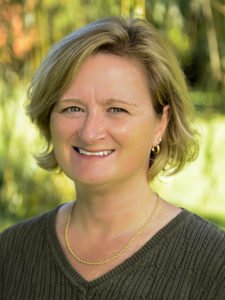Dr. Susan Reutzel-Edens
Margaret C. Etter Memorial Lecture in Materials Chemistry
Dr. Susan Reutzel-Edens
The Cambridge Crystallographic Data Centre
Host: Professor Tom Hoye
Inspiring Medicines Design through Solid State Chemistry
The first step in transforming a molecule to a medicine is invariably identifying a stable crystalline form with which to isolate and purify the drug. Among potentially many different solid form options (polymorphs, hydrates, solvates), the chosen crystalline form will ideally have favourable properties for downstream processing and meet the design requirements of the drug product to ensure consistency in its safety and efficacy profile throughout the shelf life. A molecule’s tendency to exhibit polymorphic behavior is one manifestation of the relative importance of two competing factors - thermodynamics and kinetics - as molecules (or ions) pack in different crystal structures at different rates to minimize their free energy. Experimental solid form screens aim to overcome the kinetic barriers to crystal nucleation and growth en route to producing as many polymorphs as possible, in particular the thermodynamically most stable form.
Crystal structure prediction (CSP) methods have also been developed to address “one of the continuing scandals in the physical sciences” to quote John Maddox in 1988, namely the ability to predict the crystal structure of a compound from its chemical composition. Thanks in part to the CCDC-sponsored blind tests of CSP, which have benchmarked the progress of the algorithms over more than two decades, and the emergence of commercial CSP providers, structure prediction is now widely applied across the pharmaceutical industry.[1] However, the application of ‘in silico’ polymorph screening to pharmaceutical molecules, which have usually undergone thorough experimental screening, has revealed two problems: computational over-prediction and experimental under-estimation.[2] In this presentation, the challenges posed by these problems and the opportunity for data-driven approaches to assess the risk of polymorphism are highlighted. Here we attempt to answer, “What can we learn about how molecules crystallize from the 1.1+ million structures in the Cambridge Structural Database that have crystallized?”
Research
Her research interests include crystal polymorphism, materials design and engineering, crystal nucleation and growth, structure-property relationships, crystal structure prediction and the digital design of drug products.
Dr. Susan Reutzel-Edens
Susan earned her PhD at the University of Minnesota (1991) under the direction of the late Professor Margaret C. Etter, and thereafter joined Eli Lilly and Company. There, she founded the solid form design program and for two decades led a team of cross-functional scientists charged with finding commercially-viable crystalline forms for small-molecule drug products.
She has contributed to the development of more than 150 compounds, is a named inventor on 12 US patents, and has published over 50 papers and book chapters on key aspects of solid form development.
She was elected Fellow of the Royal Society of Chemistry in 2018 and in 2019 joined the Scientific Advisory Board of the Cambridge Crystallographic Data Centre. She is also an adjunct professor at Purdue University and currently serves on the CrystEngComm Editorial Board, the Editorial Advisory Boards of the Journal of Pharmaceutical Sciences and Pharmaceutical Research, and as a topic editor for Crystal Growth and Design.
